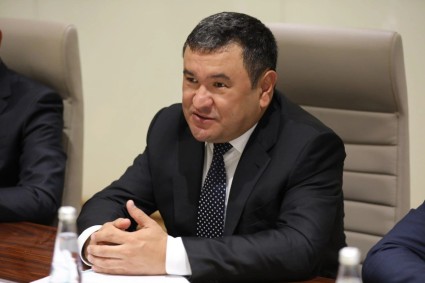Remittances to Low- and Middle-Income Countries (LMIC) are expected to grow by 1.4 percent to reach $656 billion in 2023, following a very strong 8 percent growth in 2022 and 10.6 percent in 2021. As a result, remittances are now even larger than FDI and ODA and, excluding China, larger than the sum of FDI and ODA.
This remarkable, consecutive year-on-year growth was supported by several factors such as strong oil prices in the Gulf Cooperation Council (GCC) countries, which increased migrants’ incomes; large money transfers from the Russian Federation to countries in Central Asia; and the strong labor market in the United States and other advanced migrant destination economies. By region, remittance inflows grew by 0.7% in East Asia and the Pacific, 19% in Europe and Central Asia, 11.3% in Latin America and the Caribbean, 12.2% in South Asia, and 6.1% in Sub-Saharan Africa in 2022. In the same period, remittance inflows declined by 3.8% for the Middle East and North Africa region.
In 2023, however, slower growth in remittances is expected in all regions, notably in Europe and Central Asia (1 percent) and South Asia (0.3 percent). In Europe and Central Asia, remittances are slowing down because of lower Russian demand for their workers in Russia from that region, and the weakening of the ruble against the U.S. dollar. In South Asia, growth in remittances is expected to slow due to worldwide layoffs in the information technology IT sector globally and the possible diversion of remittance flows to informal channels as domestic economic uncertainties worsen in some recipient countries.
By contrast, the growth rate of remittances is expected to remain relatively remain strong in Latin America and the Caribbean region (3.3 percent). Most of the senders of remittances to this region are based in the United States, where both the employment levels and wages of Hispanics and foreign-born workers and their wages have been strong. Growth rates of remittance flows are expected to be 1.5 percent in the Middle East and North Africa, 1 percent in East Asia and the Pacific region, and 1.3 percent in Sub-Saharan Africa.
The top five recipient countries for remittances in 2022 were India (receiving $111 billion), Mexico ($61 billion), China ($51 billion), the Philippines ($38 billion), and Pakistan ($30 billion). Economies where remittance inflows represent large shares of GDP—highlighting the importance of remittances for funding current account and fiscal shortfalls— include Tajikistan (51% of GDP), Tonga (44%), Lebanon (36%), Samoa (34%) and the Kyrgyz Republic (31%).
Besides economic growth and the employment levels of foreign workers, the other two variables that affect remittance flows are oil prices (especially in the Russian Federation and the GCC countries member countries of the Gulf Cooperation Council), and exchange rates of local currencies with respect to the U.S. dollar. In many remittance-recipient countries facing balance of payments difficulties and the emergence of gaps between the official and the market exchange rate, remittance flows may shift to informal channels, which can potentially underestimate the true size of official data on remittance flows.
With the stock of migrants likely to increase globally due to income gap, demographic change, and climate change, remittances will continue to grow in a counter-cyclical manner. Also, there is no doubt that during a crisis, remittances have emerged as a dependable financial lifeline in many economies through the pandemic and will continue to remain so. The need is to devise policies that can employ remittance flows for the development outcomes of the global south and north. The World Bank has stepped up collaborations with source and recipient countries to improve data and remittances to mobilize private sector capital through diaspora bonds and globally improved sovereign ratings.












